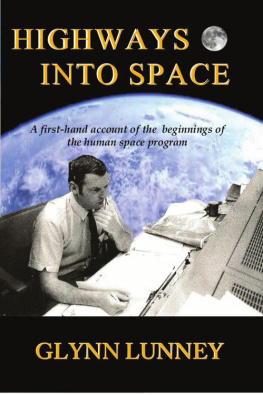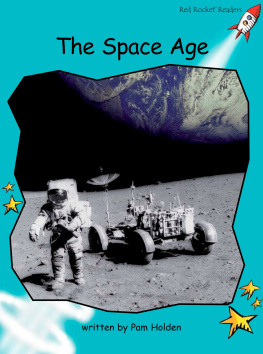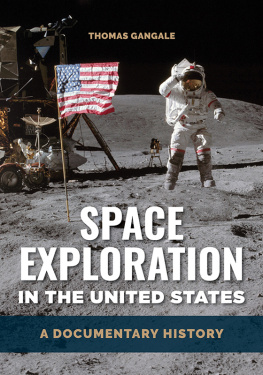Glynn S. Lunney - Highways Into Space: A first-hand account of the beginnings of the human space program
Here you can read online Glynn S. Lunney - Highways Into Space: A first-hand account of the beginnings of the human space program full text of the book (entire story) in english for free. Download pdf and epub, get meaning, cover and reviews about this ebook. year: 2014, genre: Non-fiction. Description of the work, (preface) as well as reviews are available. Best literature library LitArk.com created for fans of good reading and offers a wide selection of genres:
Romance novel
Science fiction
Adventure
Detective
Science
History
Home and family
Prose
Art
Politics
Computer
Non-fiction
Religion
Business
Children
Humor
Choose a favorite category and find really read worthwhile books. Enjoy immersion in the world of imagination, feel the emotions of the characters or learn something new for yourself, make an fascinating discovery.
- Book:Highways Into Space: A first-hand account of the beginnings of the human space program
- Author:
- Genre:
- Year:2014
- Rating:4 / 5
- Favourites:Add to favourites
- Your mark:
- 80
- 1
- 2
- 3
- 4
- 5
Highways Into Space: A first-hand account of the beginnings of the human space program: summary, description and annotation
We offer to read an annotation, description, summary or preface (depends on what the author of the book "Highways Into Space: A first-hand account of the beginnings of the human space program" wrote himself). If you haven't found the necessary information about the book — write in the comments, we will try to find it.
Glynn S. Lunney: author's other books
Who wrote Highways Into Space: A first-hand account of the beginnings of the human space program? Find out the surname, the name of the author of the book and a list of all author's works by series.
Highways Into Space: A first-hand account of the beginnings of the human space program — read online for free the complete book (whole text) full work
Below is the text of the book, divided by pages. System saving the place of the last page read, allows you to conveniently read the book "Highways Into Space: A first-hand account of the beginnings of the human space program" online for free, without having to search again every time where you left off. Put a bookmark, and you can go to the page where you finished reading at any time.
Font size:
Interval:
Bookmark:
The Early Years of Inventing the
Mission Control Center, Achieving the First
Interntional Docking Mission &
Deploying Skylab, the First U.S. Space Station

Glynn Lunney at Console Apollo XIII
Glynn S. Lunney
1st Edition 2014
Table of Contents
HIGHWAYS INTO SPACE
Copyright 2014 by Glynn S. Lunney. All rights reserved.
ISBN: 978-0-9907127-2-5
Please send your comments to the address below.
Thank you in advance.
Glynn S. Lunney
Email: glunney@gmail.com
Printed in the United States of America.
All rights reserved. No part of this book may be reproduced or transmitted in any form or by any means, electronic or mechanical, including photocopying, recording or any information storage and retrieval system without written permission of the publisher except for brief quotations used in reviews, written specifically for inclusion in a newspaper, blog, or magazine.
Requests for information should be addressed
to the above address.
To All Those Who Worked on the Beginnings of the
Human Space Program and Turned Impossible
Dreams into Reality
Credits
Credit to this source in capturing the detailed story before the author role began and as a reference for the timeline of events, minutes, and participants throughout the project.
Book title: The Partnership: A History of the Apollo-Soyuz Test Project by Edward Clinton Ezell and Linda Newman Ezell, 1978, NASA History Office.
Credit to this source in providing the detailed history of the Skylab program development and as a reference timeline for events, decisions, and participants throughout the project.
Book title: Living, Working in Space, a History of Skylab by W. David Compton and Charles D. Benson, 1983, NASA History Series.
Credit to NASA for the use of photos throughout the book.
Credit to Jim Jaax for his WG-5 photo collage.
Credit to Virginia Tech, Special Collections Archive, Chris Kraft material.
Over years, my wife, Marilyn, pursued a continued suggestion that I should capture my recollections of the early times in the manned space era. At an event in Seattle in 2009, the idea of a book took a big step towards reality. Six members of the original Flight Dynamics Branch agreed to write their stories in a collaborative effort, and so we had the peer incentive to actually start. We decided to write for our families and those who would join the families in time to come. For her perseverance, Marilyn was rewarded with being my typing and editing partner.
Dave Reed volunteered to provide the IT know how to prepare the product to the printers specs. Jerry Bostick was the inspirational psychologist for all of us. Jerry Woodfill provided an early prototype book so we could see what it might look like. Besides Dave and Jerry, Chuck Deiterich, Maurice Kennedy, Bill Boone and Bill Stoval assumed the new role of authors also. The first edition was published in 2010 and titled From the Trench of Mission Control to the Craters of the Moon.
At more urging from Marilyn, Arnie Aldrich and Dave Scott, the remaining Apollo flights, including my best work, Apollo XIII, and my role in Skylab and Apollo/Soyuz are now added to my original story that concluded at Apollo XI. We found new typing help from granddaughters Macy and Erin. Shea helped with the cover design. Abbey was indispensable as the excutive editor in managing the getting-ready-to-go-to printing. Thanks to Arnie and John Aaron for their help on Apollo XIII specifics and Arnie and Len Nicholson for recollections of Apollo/Soyuz. Milt Windler helped with Skylab and Ken Young with rendezvous.
Thanks to Rebecca Wright of the JSC history office for all things historic, and Mike Gentry and Jody Russell of the JSC Media Resource Center for their recall of the right photo for the right occasion.
As always, Chris Kraft was there for support and encouragement.
Thanks to all of you and the many others who gave moral support.
Glynn Lunney, Black Flight
By Chris Kraft
The start up of the NASA Space Task Group (STG) in 1958 required a large number of young engineers to initiate Project Mercury. The result of this recruitment was a rewarding experience for all concerned because it enlisted a group of very capable young men who were talented and eager to work on new ideas and new approaches to solving the myriad of problems that placing a man in space for the first time created. Glynn Lunney was one of these young men who came to the STG by way of the NACA Lewis laboratory in Cleveland, Ohio.
He had recently come to NACA and thereby became engaged in some of the technical issues facing a reentering spacecraft from orbital speeds. As a result, he found himself travelling to Langley Field, Virginia, in a makeshift NACA air transport on a weekly basis to aid in the studies being done regarding trajectory analysis for the launch, orbit determination and reentry of the Mercury spaceship. This early work placed him in a position to be selected to join the STG on a permanent basis. This was a very fortuitous event for both Lunney and NASA because he became one of the stalwarts who was responsible for developing the plans and test procedures for the Mercury Program.
The concept of real time flight control of a vehicle in space was a new field of operations and required the development of engineers and electronic equipment to make it happen. Lunney became intimately involved in this work. Because of his understanding of the Mercury flight test design and his knowledge of orbital mechanics his inputs to this work were very useful. In addition, as the need for engineers to become a big part of the flight control activity the unique personnel requirements made him one of the prominent leaders.
It was this early work that brought Lunney into the upper levels of STG management and gave him the opportunity to excel in the world of manned spaceflight. His work ethics and leadership qualities were a great asset to the work on Gemini and Apollo that led to landing men on the Moon, returning him safely to earth and fulfilling President Kennedys goal that he so boldly made.
Lunney was chosen to lead a number of other critical activities associated with the U.S. Space Program, including the highly visible flight with the Russians in the mid 70s. He was a major factor in the success of all of the space activities conducted by the Unites States in its first 3 decades and particularly the exemplary work he did as a Flight Director for Apollo XIII.
Glynn Lunney has chosen to record the salient parts of his private and professional life in a book. Those interested in the early days of the space program and interested in its history will find his writing a fascinating tale.
It is daunting to try to do something like capturing history. In reading many of the books people have written about the space program, it is always impressive to realize the differences in the landscape that we each see. How it looks depends on our technical and emotional involvement in a particular set of events, and our place in the organization, which is a measure of how much scope we are exposed to. And then we have our own backgrounds, which are personal prisms for remembering and interpreting the events we were part of.
This book was written in two stages. The first was started in 2009 with a number of us who worked together to invent the trajectory control function in the Mission Control Center (MCC). We joined in a collaboration to capture our recollections of the early times in the human space program. Our intended audience was our families and descendants who might like to know how it was to participate in Apollo. The plan was to cover the events up to and including the Apollo XI lunar landing flight as a mission accomplished response to President Kennedys 1961 goal. Most of the other nine authors went past that point and completed their career histories. I was not that fast and always planned to finish later. This first effort was completed in book form and titled From the Trench of Mission Control to the Craters of the Moon.
Font size:
Interval:
Bookmark:
Similar books «Highways Into Space: A first-hand account of the beginnings of the human space program»
Look at similar books to Highways Into Space: A first-hand account of the beginnings of the human space program. We have selected literature similar in name and meaning in the hope of providing readers with more options to find new, interesting, not yet read works.
Discussion, reviews of the book Highways Into Space: A first-hand account of the beginnings of the human space program and just readers' own opinions. Leave your comments, write what you think about the work, its meaning or the main characters. Specify what exactly you liked and what you didn't like, and why you think so.









